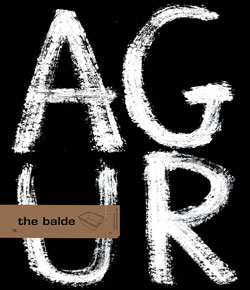km
How many kilos would the books in the KM library weigh if you put them all together? And if you put them side by side, how many metres would they measure? How many K-ilos and how many M-etres are there in KM? That’s the first thing that came to mind when I started writing this article about KM. And I do realise that making this sort of reflection is not going to do me any good. But I can’t resist it. Because for me Koldo Mitxelena Culture Centre is KM. There are specific places which we all know if every city. Places which are references on physical and emotional maps, their axis. You only have to look at where we citizens meet up. In Donostia, KM has been one such place, along with the clock on the Boulevard, for the last twenty years. That too came to mind. How many times have I met up with people at KM? It might not seem like anything, but meeting up opposite a culture centre or a library is not the same as meeting opposite a department store.
And knowing how many kilos and metres, intellectual curiosity, boredom, education and pleasure have been experienced in the exhibitions held there over the last 20 years during conferences and at exhibitions? How can you measure what can’t be measured? Books, films, sound recordings, maps... if if was just measuring them, there wouldn’t be a problem. But it’s more than that which makes up a library. Libraries are special organisms. The people who
work there, the relationships which have existed there, the authors and ideas you’ve heard about there, meeting up with friends there... They’re all important things in those oceans called libraries. Virginia Wolf described libraries as seas full of broken treasures.
Koldo Mitxelena, which knows that, has organized different activities and projects there over the last 20 years. The “Biblioteka eta Jakintza (Library and Wisdom) archives, mutations and configurations” exhibition is going to be open until the 9th of August. You can see different national and international artists’ work about the idea of what a library is there. It also features work prepared especially for the exhibition. Artists Arrate Rodriguez, Maider Lopez, Xabier Erkizia and Ricardo Orkaranza have taken contemporary art as their starting point for reflecting on libraries’ uses and characters. It is a project in the 20th anniversary celebrations which is also a reinterpretation. People from different creative backgrounds have chosen books to talk about until the end of the year; to talk about and express themselves in other ways too.
The love we have for libraries, like all types of love, is a process. Something we learn about over time and by using it. Steimbeck said that a country’s culture can be measured by measuring the dust that builds up on the books in public libraries. Maybe that was a valid definition a century ago. Our criteria are different nowadays. The finest things offered by libraries now are acts and encouragement which cannot be measured. Following Virginia Wolf’s words, in addition to being places to keep treasure, they are now places for making new treasures. And, speaking of treasures, and not forgetting the peculiar beginning of this article, I’d like to finish by quoting Laura Bush (yes, George W. Bush’s wife): Libraries are community treasures. Information is available to everyone there without differentiating people, in equality. The most important card I have is my library card.
kmk.gipuzkoakultura.net/
And knowing how many kilos and metres, intellectual curiosity, boredom, education and pleasure have been experienced in the exhibitions held there over the last 20 years during conferences and at exhibitions? How can you measure what can’t be measured? Books, films, sound recordings, maps... if if was just measuring them, there wouldn’t be a problem. But it’s more than that which makes up a library. Libraries are special organisms. The people who
work there, the relationships which have existed there, the authors and ideas you’ve heard about there, meeting up with friends there... They’re all important things in those oceans called libraries. Virginia Wolf described libraries as seas full of broken treasures.
Koldo Mitxelena, which knows that, has organized different activities and projects there over the last 20 years. The “Biblioteka eta Jakintza (Library and Wisdom) archives, mutations and configurations” exhibition is going to be open until the 9th of August. You can see different national and international artists’ work about the idea of what a library is there. It also features work prepared especially for the exhibition. Artists Arrate Rodriguez, Maider Lopez, Xabier Erkizia and Ricardo Orkaranza have taken contemporary art as their starting point for reflecting on libraries’ uses and characters. It is a project in the 20th anniversary celebrations which is also a reinterpretation. People from different creative backgrounds have chosen books to talk about until the end of the year; to talk about and express themselves in other ways too.
The love we have for libraries, like all types of love, is a process. Something we learn about over time and by using it. Steimbeck said that a country’s culture can be measured by measuring the dust that builds up on the books in public libraries. Maybe that was a valid definition a century ago. Our criteria are different nowadays. The finest things offered by libraries now are acts and encouragement which cannot be measured. Following Virginia Wolf’s words, in addition to being places to keep treasure, they are now places for making new treasures. And, speaking of treasures, and not forgetting the peculiar beginning of this article, I’d like to finish by quoting Laura Bush (yes, George W. Bush’s wife): Libraries are community treasures. Information is available to everyone there without differentiating people, in equality. The most important card I have is my library card.
kmk.gipuzkoakultura.net/



